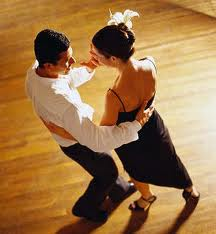 It’s the holidays and time for holiday parties. You’ve got the cute cocktail dress and a pair of killer high heels. And if you’re planning to dance the night away, more than likely, you’re going to wake up the next morning with foot pain or a “high-heel hangover.”
It’s the holidays and time for holiday parties. You’ve got the cute cocktail dress and a pair of killer high heels. And if you’re planning to dance the night away, more than likely, you’re going to wake up the next morning with foot pain or a “high-heel hangover.”
Did you know that high heels, by their nature, shift your body’s anatomy out of alignment? When the heel bone is elevated, you experience an immediate change in the distribution of your weight on your feet. Your weight shifts from your heel to your forefoot. And, the higher the heel, the greater the weight shift is to the ball of your foot and toes. This weight shift change can lead to increased postural and alignment strain on your body.
With regular high-heel use, the calf muscles in your lower leg can permanently shorten – meaning you’ll further increase the pressure on the ball of your foot, and you won’t be able to wear flat shoes comfortably. Eventually, you’ll experience pain in your feet, ankles, legs and back.
Also, high heels can affect your posture and the position of your joints in your legs, pelvic and back. Many studies have found when the height of the heel is increased; it causes the front of the pelvis to tilt more, subsequently increasing the curvature of the lower spine. With repetitive high-heel use, you may develop chronic lower back pain and increase your risk of disc compression in your spine, reducing your body’s stability.
Additionally, high-heel use can lead to:
- Corns and calluses
- Bunions
- Hammertoe
- Plantar fasciitis
- Achilles tendonitis
- Pinched nerves
- Fractures of the foot and ankle
However, if you don’t want to give up wearing those killer heels, here are some suggestions to minimize your risk.
- Make sure your shoes fit properly. Refer to our Shoe Fitting Guide to learn how to fit your shoes properly.
- Wear high heels in moderation. Avoid walking on uneven surfaces or long distances in high heels. Wear lower-heeled shoes (2 inches or less), whenever possible, for increased stability.
- Wear shoes with a thicker heel for more stability and better balance. By the way, did you know that stiletto is Italian for dagger? Think about – do you really want to be walking on daggers?
- Consider the pitch or slope of the shoe when buying high heels. Some heels have a steeper slope that drops straight down to the toe bed, causing increased pressure on the toes and greater weight redistribution on your feet. While other high heels have a more gradual slope which may be better on your arch.
- Perform foot and calf muscle stretches regularly to improve flexibility and reduce the likelihood of muscle contraction.
- Wear open-toe style shoes to reduce the pressure on corns and calluses.
- Cushion your feet with custom foot orthotics, like ezWalker® Performance Insoles. These insoles are specifically designed to the contour of each one of your feet. That means you’ll receive customized support, so each foot receives proper medial, lateral, and trans-metatarsal arch support. This will relieve pressure on the balls of your feet and your toes. You’ll walk better since your feet are supported better due to the proper biomechanical repositioning of your feet. Therefore, your feet will feel better at the end of the day.
- If you experience pain, swelling or a change in the shape of your foot, see your doctor immediately.
For more information on ezWalker® Performance Insoles, visit our website. These insoles are ultra thin and ¾ in length, so they fit in any shoe – and can easily be changed from shoe to shoe. So don’t let foot pain get in the way of your holiday fun. Stay in step and stay in style with ezWalker® by WalkEz. Get yours today!
Remember … when your feet feel good, you feel good.

